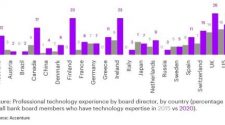The Internal Revenue Service on May 28, 2020, introduced proposed regulations detailing how companies can qualify for carbon capture tax credits under Section 45Q of the Internal Revenue Code. The proposed regulations reflect the response by the IRS and U.S. Department of the Treasury to these agencies’ May 2019 request for comments on a credit for carbon dioxide sequestration after enactment of the Bipartisan Budget Agreement (BBA) in February 2018. The BBA expanded Section 45Q to allow for carbon capture tax credit for equipment placed into service on or after February 9, 2018, during the 12-year period starting on the date the carbon capture equipment was placed into service.
Carbon capture and sequestration (CCS) regulations are governed by various federal agencies, including: the U.S. Environmental Protection Agency through regulating greenhouse gas reporting and geological sequestration techniques described further below; the U.S. Department of Energy for research and development into CCS techniques and heading the Clean Coal Power Initiative; and the U.S. Department of the Interior, which provides methodologies to geological sequestration techniques. The proposed regulations released by the IRS fit into the current regulatory regime down the line from other agency’s regulations—the tax credits can be claimed only after these other agency regulations are followed.
What Is CCS?
The process of CCS is not defined explicitly in the proposed regulations, but as described broadly by the EPA, it is “a set of technologies that can greatly reduce CO2 emissions from new and existing coal- and gas-fired power plants and large industrial processes.” The goal of this process is to reduce the amount of greenhouse gases emitted to the atmosphere which contribute to anthropogenic climate change.
CCS techniques have largely been focused on capturing and managing carbon dioxide emissions, as this is the most ubiquitous greenhouse gas. CCS techniques can significantly reduce emissions from large stationary sources of carbon dioxide, including coal- and natural gas-fired power plants, ethanol and natural gas processing plants, and other industrial sources. EPA’s Greenhouse Gas Reporting Program, mentioned above, includes facilities that capture carbon dioxide for the purpose of injecting it underground or utilizing it in the economy to other end uses. According to the Greenhouse Gas Reporting Program, carbon dioxide capture is currently occurring at over 120 facilities in the United States and is being used for a wide variety of end uses, including enhanced oil recovery (EOR), food and beverage manufacturing, pulp and paper manufacturing, and metal fabrication.
What Are Carbon Capture Tax Credits and Who Qualifies?
The proposed regulations make two key distinctions to classify parties eligible for carbon capture tax credits. First, they provide that the extent to which an entity is eligible to claim a credit depends on when that entity put “carbon capture equipment”[1] into service at a “qualified facility”[2]—either before February 9, 2018, (an old 45Q facility) or on or after February 9, 2018, (a new 45Q facility), explained further below. Second, the proposed regulations distinguish three different techniques for how the qualified carbon oxide is disposed of in order to determine which of the two potential credits apply. These three techniques are carbon disposal through (1) geological storage; (2) use as a tertiary injectant in a qualified enhanced oil or natural gas recovery project; or (3) utilizing carbon oxide in certain other specified ways.
There are two potential tax credits for eligible entities: either (1) up to $50 per metric ton for the permanent geological sequestration of carbon oxides[3], or (2) up to $35 per metric ton for use in EOR.[4] Section 45Q imposes no limit on the number of metric tons of qualified carbon oxide that is captured in a new 45Q facility, which is a departure from earlier rules that limited carbon capture to a total of 75,000,000 metric tons of qualified carbon oxide in an old 45Q facility.
In order to determine the length of time that an entity is eligible for the Section 45Q credits, the proposed regulations establish a credit effective date of February 9, 2018, to distinguish old from new 45Q facilities. Those facilities placed into service prior to February 9, 2018, are “old” facilities, while those placed into service after February 9, 2018, are “new” facilities. For new 45Q facilities, the Section 45Q credits are available during the 12-year period that begins on the date the equipment is originally placed in service. For old 45Q facilities, the Section 45Q credits are available for varying lengths of time and amounts based on when the facility went into service.
The proposed regulations provide that the statutory definition of qualified carbon oxide is clear due to the broad acceptance and use of the term by industry participants, environmental groups, and stakeholders. Therefore, the proposed regulations generally conform to the statutory definition of qualified carbon oxide, including the provision that only qualified carbon oxide captured and disposed of, injected, or utilized within the United States or a possession of the United States is taken into account. For CCS facilities placed in service prior to February 9, 2018, and for “direct air capture” facilities, credits can only be claimed for carbon dioxide.
The proposed regulations cover other issues relating to the Section 45Q credits, including the following:
- Procedures to determine adequate security measures for geological storage of qualified carbon oxide
- The allocation between the different credit regimes when new equipment is placed into service in an old 45Q facility
- Exceptions for who the credit is attributable to
- Procedures to allow third-party taxpayers to claim the credit
- Standards for measuring utilization of qualified carbon oxide
- Rules for recapturing credit in the event carbon ceases to be captured or stored during the relevant recapture period
Regulating Secure Geologic Storage
Existing EPA regulations (40 C.F.R. Subpart RR) govern the geologic sequestration of carbon dioxide. In developing the proposed regulations, the Treasury Department worked with EPA, DOI, and DOE to define “secure geological storage” in Section 45Q(f)(2) so that qualified carbon oxide is recaptured and does not end up emitted to the atmosphere. Secure geological storage applies to both use of carbon oxide as a tertiary injectant for EOR and disposal through sequestration techniques. The proposed regulations provide that for EOR, secure geological storage qualifying for Section 45Q credits includes storage that is either (1) in compliance with EPA’s subpart RR regulations, or (2) reported under the International Organization of Standardization standard for quantifying safe long-term storage of carbon dioxide in association with EOR, provided in CSA/ANSI ISO 27916:19.
To report under EPA’s subpart RR regulations, the applicant may self-certify the amount of stored carbon oxide. When using the ISO process however, the taxpayer may prepare the calculation but is required to utilize an independent third-party verification annually by a qualified engineer or geologist that the information is accurate and complete. There is no public posting requirement as to the amount of carbon oxide stored.
Implications
The proposed regulations released by the IRS provide guidance on increased avenues for companies already implementing some form of CCS techniques to receive tax credits. The Section 45Q credits are meant to encourage increased investment in CCS technologies. The market price of these innovative technologies will be drawn down by the increase in demand by companies seeking to implement these processes to qualify for the Section 45Q credits. As the world’s governing bodies move towards implementing more stringent taxes and regulations on businesses and facilities that emit large amounts of carbon, these tax credits serve to incentivize a longer-term outlook on investing in new technologies and methods to reduce carbon emissions.
Endnotes
[1] “Carbon capture equipment” is defined generally by the proposed regulations as including “all components of property that are used to capture or process carbon oxide until the carbon oxide is transported for disposal, injection, or utilization.” §1.45Q-2(c).
[2] “Qualified facility” is defined as “any industrial facility, electricity generating facility, or direct air capture facility, the construction of which begins before January 1, 2024, and either at which construction of carbon capture equipment begins before that date, or the original planning and designed for which includes installation of carbon capture equipment, and at which carbon capture equipment is placed in service that captures the requisite annual thresholds of carbon oxide…” §1.45Q-2(g).
[3] For any taxable year beginning in a calendar year (1) after 2016 and before 2027 is an amount equal to the dollar amount established by linear interpolation between $22.66 and $50 for each calendar year during such period, and (2) after 2026 is an amount equal to the product of $50 and the Section 43(b)(3) inflation adjustment.
[4] For taxable year beginning in a calendar year (1) after 2016 and before 2027 is an amount equal to the dollar amount established by linear interpolation between $12.83 and $35 for each calendar year during such period and (2) after 2026 is an amount equal to the product of $35 and the Section 43(b)(3) inflation adjustment.
[View source.]
















